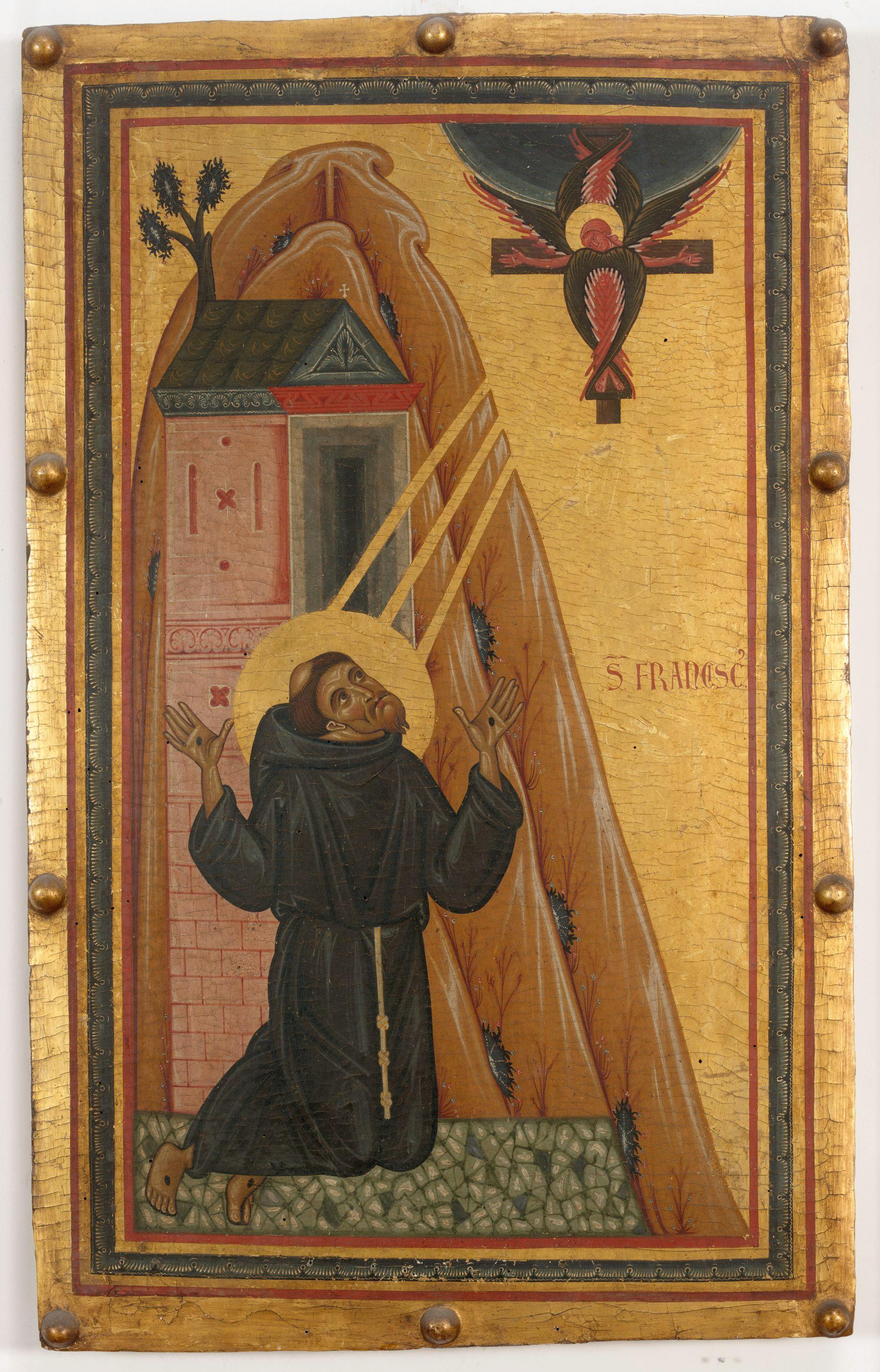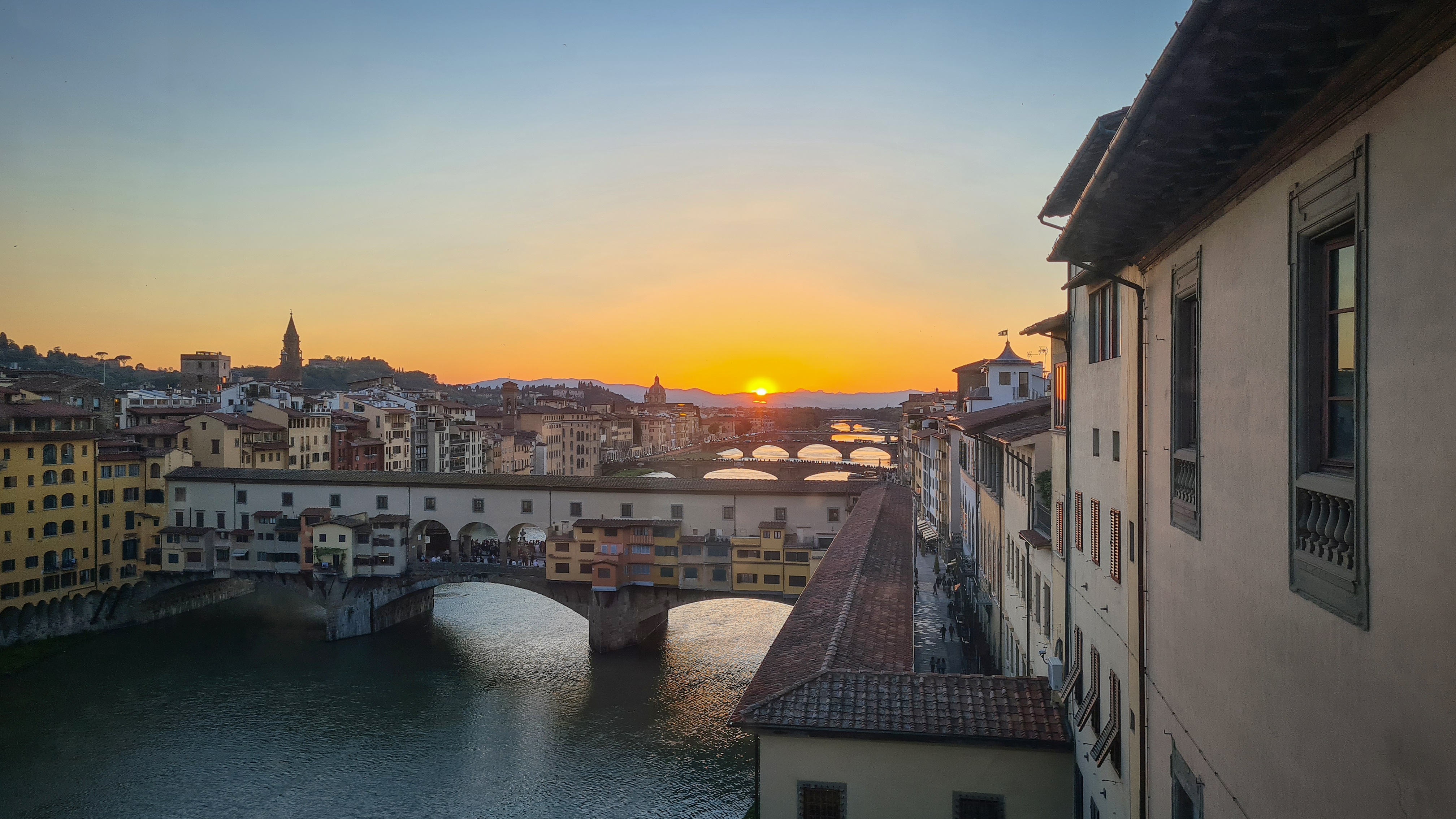Stigmata of St Francis
Master of Cross no. 434 of the Uffizi (Lucca and Florence, second quarter of the 13th century)
This is one of the most ancient depictions of the Stigmata of St Francis, the episode in the saint’s life that distinguished the biography of the poor little man from Assisi from that of all the other saints who had lived until then.
In the painting, Francis is pictured kneeling down with arms wide open, in a praying position, contemplating a seraph angel clinging to the cross. In Francis’ hands and feet, the spectator can clearly see the heads of the nails that caused the stigmata. The miracle, which occurred in September 1224, was only made public in 1226 when the saint died, in the encyclical in which his disciple, Brother Elias of Cortona, announced the passing of the founder of the Order to Pope Gregory IX and the Franciscan provinces. Three rays of light shine down from the angel, flooding Francis’ face, indicating the ascetic’s spiritual interaction with the celestial vision, which caused the stigmata to appear. The unwelcoming landscape of La Verna in Casentino - the mountain offered by Count Orlando Cattano to Francis as a hermitage - is depicted as a series of sheer cliffs on which sparse wild plants grow. Behind Francis, a chapel stands high on the cliff, the first church of the hermitage, named after St Mary of the Angels.
The painting in the Uffizi is one of the images of Francis of Assisi that survived the order issued by the General Chapter of the Franciscan Order in Paris in 1266, to destroy all the effigies of the saint reproduced until then, together with all versions of his biography other than the Legenda maior. Of all the 13th century images of Francis known today, the work is a rarity as it portrays a single narrative episode, highlighting the exceptional nature of the miracle of the stigmata. The image also features an inscription bearing the saint’s name in the bottom right of the painting, which almost appears an attempt to avert the possibility that Francis would not be recognized as the protagonist of the prodigious event. Nothing is known about the origin of the painting, donated by the merchant Ugo Baldi to the Accademia di Belle Arti of Florence in 1863. It is believed to be the work of a painter who trained in Lucca but worked in the Florence area in the second quarter of the 13th century, responsible for the execution of the Cross marked by inventory no. 434 in the Uffizi Gallery.
Painted cross
Master of the cross 434

